A WILLOW GREW IN BROOKLYN HEIGHTS (1938)
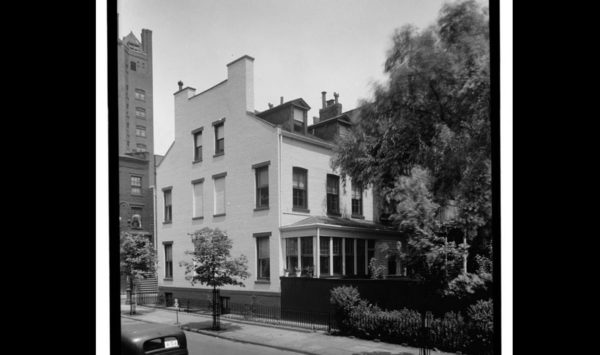
******************************************************************************************************************************** Brownstone Detectives investigates the history of our clients’ homes. The story you are about to read was composed from research conducted in the course of one of those investigations. Do you know the history of YOUR house? ******************************************************************************************************************************** (In September of 1938, one of the deadliest and most destructive tropical cyclones to hit Long Island, New York, “The Long Island Express,” wrecked havoc on the peninsula and much of Brooklyn, as well. In addition to killing 682 people and damaging or destroying more than 57,000 homes (causing property losses of $4.7 billion in today’s dollars), the hurricane knocked down innumerable trees. One of the more famous trees to lose its life in that storm was a willow tree of unknown age which sat in the yard of Brooklyn Heights’s No. 57 Willow Street. Some claimed that it was this tree that gave the street its name.) *********************************************************************************************** From the Brooklyn Daily Eagle, Mon., 31 October 1938 (by columnist Maxwell Hamilton): “At the rate timber fell around us during the Hollywood hurricane last September (ed.’s note-“The Long Island Express” was one of the deadliest and most destructive cyclones to strike Long Island, New York), it would have been a flagrant case of playing favorites to select any one particular crashing tree and honor it with front-page billing. And yet, if the evidence gathered by our secret agents is worth any salt at all, it would appear that we all missed up on one leafy upheaval that was genuine news. We […]
THE SKY BLUE CEILINGS OF 121 HENRY ST (1889)
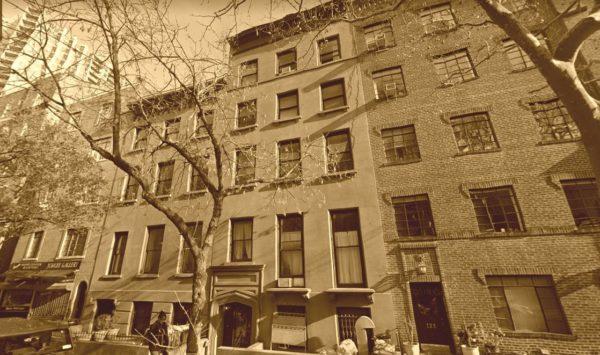
******************************************************************************************************************************** Brownstone Detectives investigates the history of our clients’ homes. The story you are about to read was composed from research conducted in the course of one of those investigations. Do you know the history of YOUR house? ******************************************************************************************************************************** In the late 1880s, the Brooklyn Daily Eagle started a series of articles which described – in great length and detail – the interiors of individual newly-built or renovated houses. These houses were usually brownstones belonging to those affluent or upper-middle-class members of society. Not only did such articles describing the interiors of neighbors’ homes sell newspapers, but the articles also served as advertising directed at those in the market for a townhouse to have a home of their own. These advertisement-articles were placed, likely at the expense of the designers responsible for the “interior decorations” being described, as each piece often ended with what readers wanted to know. “Who did the work?” WORK IS BY JOHANSMEYER & KOENKE, NEW YORK The “three story brown stone residence,” at “121 Henry street, near Clark,” was owned by Henry L. Meyer, who – at the time – was a hotel keeper, but who would rise to the position of treasurer of the Consumers Brewing Company. Meyer lived in the house with his wife and two daughters. In 1889, Meyer, who had recently acquired the (what until then had been used as a) rooming house, embarked upon a whole-house renovation, employing the New York City designers Johansmeyer & Koenke. Theodore C. Johanesmeyer and Bernhard […]
THE HUNGRY BURGLARS OF HENRY ST. (1890)
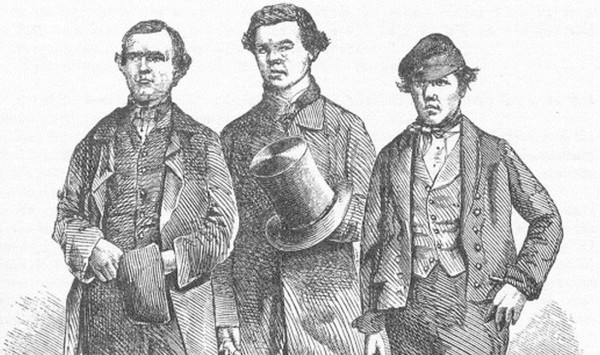
******************************************************************************************************************************** Brownstone Detectives investigates the history of our clients’ homes. The story you are about to read was composed from research conducted in the course of one of those investigations. Do you know the history of YOUR house? ******************************************************************************************************************************** Not all burglars are intent on “getting in and out quick.” And so it was when, in 1890, two Brooklyn thieves, during a burglary of a Brooklyn Heights home, actually interrupted their own burgling in order to sit down and enjoy a full meal – before carting off their substantial haul. It was in the wee hours of a February morning when the men were prowling about for a target of opportunity. Approaching Henry Street, they noticed the corner house at No. 303. The entire house was dark and so, hopping the fence, they approached the back of the residence to check the kitchen windows. Finding them closed and locked, they forced one of them open, then entered the house. The Brooklyn Daily Eagle noted that the burglars, at this point, began to help themselves to “everything they could find on the basement floor.” In the process they “broke open the cook’s trunk and stole $18 of her savings,” and “carried away silverware and a clock valued at $60.” Before going, however, finding themselves hungry and realizing they were in the house’s kitchen, they located the dishware and glasses, and fastidiously set the table. Soon, they were all seated and enjoying “a substantial meal of meat, bread, cake, and other articles […]
“IT BURNED WELL” (1885)
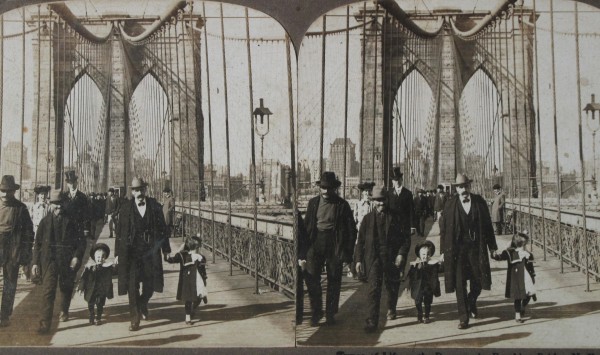
******************************************************************************************************************************** Brownstone Detectives investigates the history of our clients’ homes. The story you are about to read was composed from research conducted in the course of one of those investigations. Do you know the history of YOUR house? ******************************************************************************************************************************** Have you ever left something aboard a subway car and wondered what happened to it? The Metro Transit Authority has an entire “Lost & Found” room devoted to articles that were forgotten on their property. In it, they hold items discovered (or turned in) on their trains and buses for “three months to a maximum of three years, depending on the estimated value of the item.” If your item is not retrieved within this period of time, it is either auctioned or, if it is in poor condition, sent for disposal. Back in the late 19th century it appears that disposal was the only method employed. FOUND ON THE BRIDGE Well, apparently, the Brooklyn Bridge being so new in 1885, having so recently opened, and being so popular with the public, the accumulation of so many disparate articles on the “cars” was likely a phenomenon that had not presented itself before. As such, there was no program designed to locate the owners of the materiel left on trains and street-cars. It was simply summarily destroyed. According to a reporter for the Brooklyn Daily Eagle that year, a “great assortment of odds and ends which have been picked up on the bridge cars and promenade during the past year were cremated in […]
THE RULES OF FASHION IN BROOKLYN (1910)
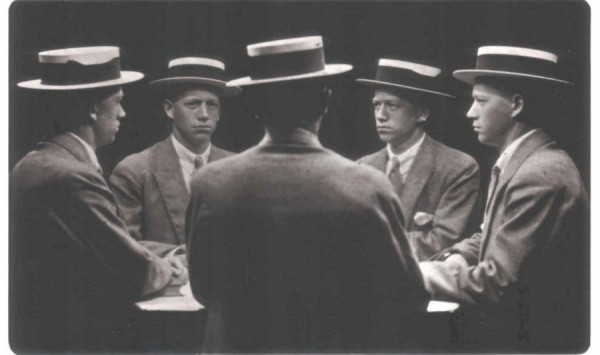
******************************************************************************************************************************** Brownstone Detectives investigates the history of our clients’ homes. The story you are about to read was composed from research conducted in the course of one of those investigations. Do you know the history of YOUR house? ******************************************************************************************************************************** Although it may not be apparent today, Brooklyn was not always known for being on the edge of trends in fashion. As a matter of fact, the town was a noted backwater 150 years ago when the only other more fashionable place than its exceedingly fashionable neighbor just across the East River was London and Paris. But Brooklyn tried. And part of that effort was its strict observance of the rules and rituals of the fashions of the changing seasons. One, for instance, did not wear white trousers at the wrong time of year. Nor were certain color jackets worn at the wrong time of the season. Another men’s fashion rule that was strictly observed was the timing of the use of the men’s straw hat. This rule was so encased in society that if they were worn too early in the season, this act could invite derision – even from children. In 1910, on the 15th of April, it was apparent that one gentleman was challenging that rule. He was seen “this afternoon, at 2:16 o’clock, in the Federal Building,” wearing the boater. It was on a “chunky man of 40 years, who stood in the registry line, fingering a roll of bills.” “The straw created a mild sensation among […]
JACK THE RIPPER IN BROOKLYN HEIGHTS (1889)
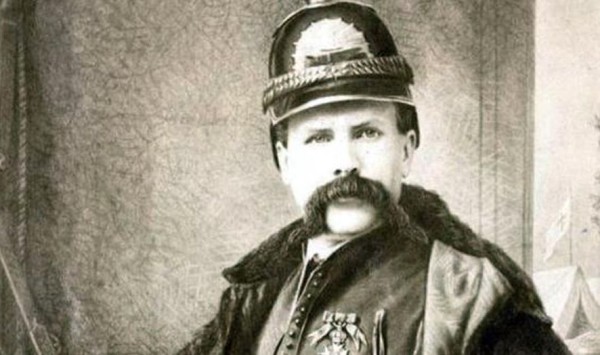
******************************************************************************************************************************** Brownstone Detectives investigates the history of our clients’ homes. The story you are about to read was composed from research conducted in the course of one of those investigations. Do you know the history of YOUR house? ******************************************************************************************************************************** The residents of Brooklyn Heights had always seemed to have much more to fear from one another than from the butcheresque stylings of London’s Jack The Ripper. His fiendish work had been performed with the great learnedness of a doctor, but, comfortingly, it had been executed all the way across the Atlantic in the East End of London. It was likely because of this distance that Brooklynites felt free to regale in the stories of the Ripper’s murders and to wonder at the identity of the modern-day butcher. On 18 January in 1889, however, all of that may have changed, when a man using the “common, every day” name Smith stepped up to a Brooklyn Heights boarding house – with his bag and great trunks en tow – and quietly checked himself in for a long stay. TWOMBLEY, THE INDIAN HERB DOCTOR The former “Indian herb doctor,” who had, through “judicious and extensive advertising, managed to make a handsome income,” engaged Mrs. Lamb’s rooms, where he also took his meals. Dr. Francis Twombley, also known as Tumblety, in his former life in the U.S. – for he was born and raised in the States – had, in the early 1860s, had an office and laboratory on Fulton Street, near Nassau. (According […]
HOW TO ABANDON A BROWNSTONE (1907)
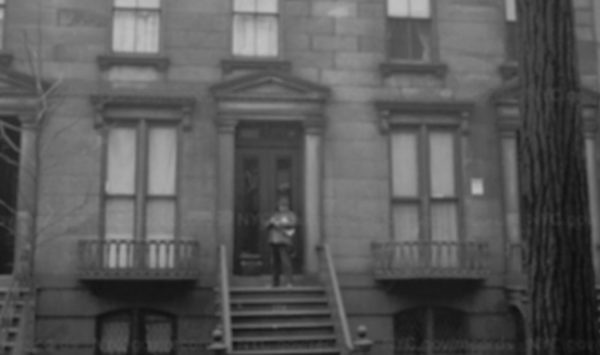
******************************************************************************************************************************** Brownstone Detectives investigates the history of our clients’ homes. The story you are about to read was composed from research conducted in the course of one of those investigations. Do you know the history of YOUR house? ******************************************************************************************************************************** The house at No. 178 State Street in Brooklyn Heights once sat untouched for almost 20 years. Owned by a woman in a sanitarium who was unable to utilize the property, she made all of her heirs promise – in 1889 – never to enter the house until she was dead. Apparently, though, they kept up appearances well in her absence by putting “help wanted” notices in the paper, and advertising “furnished rooms” in the house. The woman in question, Mrs. Mary J. Cooke King, according to her obituary, had been a leader during the Civil War in “arranging for the great fair held in Brooklyn in aid of the sanitary commission.” After she “came out of mourning” two years after her husband’s death “it was found she had developed an eccentricity of character bordering on insanity.” She “discharged all her servants; she had the windows and doors to her home iron barred and she refused to receive visitors.” The following piece appeared in the Brooklyn Daily Eagle shortly after she died, noting that the place could finally be placed on the chopping block. Obviously, none of her family wanted it. The story read: “The ‘house of mystery,’ at 178 State street, which was entered on Monday of last week for […]
A PROHIBITION WRECK ON ORANGE ST (1922)
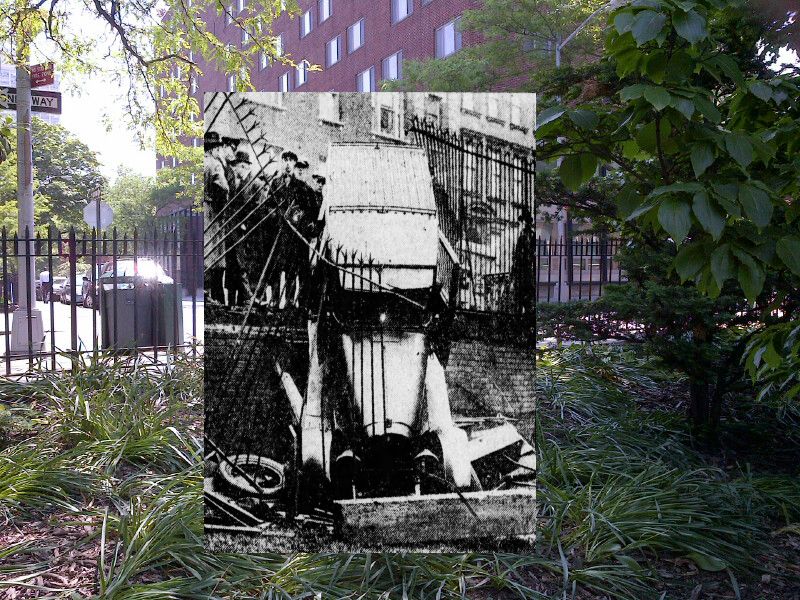
******************************************************************************************************************************** Brownstone Detectives investigates the history of our clients’ homes. The story you are about to read was composed from research conducted in the course of one of those investigations. Do you know the history of YOUR house? ******************************************************************************************************************************** “Tearing through Orange st. with the throttle wide open, in the early hours this morning, a big limousine of expensive make crashed into an electric light pole at the foot of the street, ricocheted against a fire hydrant which it completely demolished, continued on its course and crashed through an eight-foot picket fence.” A flirtation at a dance, a stolen vehicle, a crash, the removal of a set of license plates, and a hasty departure from the scene of the accident was further described in the 12 December 1922 newspaper article. “CRASH WAKENS HEIGHTS” “A blood-stained hand pushed open the door of the limousine. Two gory men stepped out,” wrote the reporter. The two men “then turned and assisted a woman out of the car. They climbed over the wall to the street and stood huddled in a little group as if debating what to do.” After a few minutes of dazed waiting, the three crash victims walked quickly up Orange Street. Then, a few minutes later, one of the men was observed returning and making “a vain effort to wrench the rear license plate from the car.” All that he succeeded in doing, though, was leaving “a number of bloody but well-defined fingerprints on the license number.” A WOMAN APPEARS […]
WAS POT GROWN IN THIS BROOKLYN PARK? (1952)
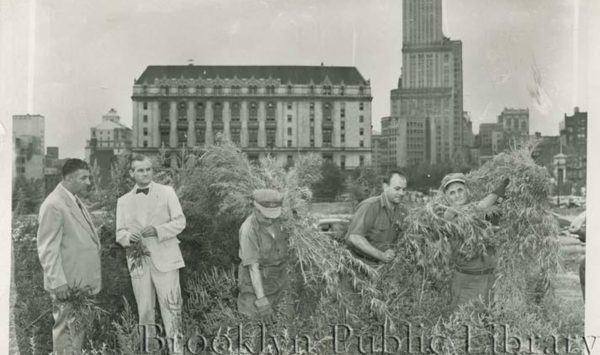
******************************************************************************************************************************** Brownstone Detectives investigates the history of our clients’ homes. The story you are about to read was composed from research conducted in the course of one of those investigations. Do you know the history of YOUR house? ******************************************************************************************************************************** Around the 1920s, Americans began to become aware of “hop.” Known alternatively as “marihuana,” the “loco weed,” “drugged cigarettes,” and a laundry list of other names, the narcotic became the focus of Fed struggles in the ’30s as its use became widespread. Raids were conducted, while drug-crazed citizens went on “1-man riots” because of the drug, and a herd of milk goats grazed on a “5-acre crop” of it at Floyd Bennett Field. In the end, though, the marijuana craze would become a difficult crop to spike. By the 1950s, raids had become an almost daily occurrence, and the City of New York was cooperating with Federal agents as it turned to conducting “operations” of its own to locate and destroy large crops that seemed to be growing just about everywhere in Brooklyn and Queens – mostly on vacant lots. A BROOKLYN PARK GROWS WEED At one point, the City conducted a public campaign with the Sanitation Department and the Police Department at the lead. The police did the locating and the sanitation workers did the destroying. During one raid, in 1952, a rather large marijuana crop seemed to be growing in a wide open park area “in the shadow of the Brooklyn Federal Building, one block north of Tillary St.” […]
DR. DOLITTLE OF BROOKLYN HEIGHTS (1910)
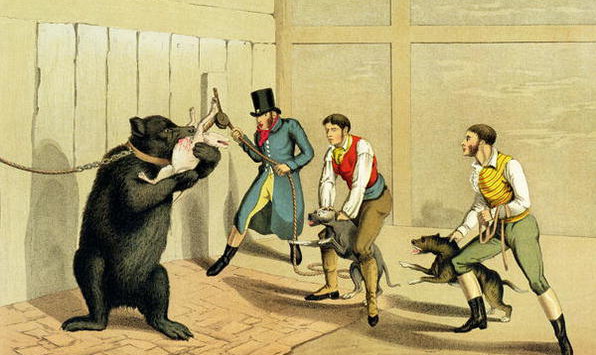
******************************************************************************************************************************** Brownstone Detectives investigates the history of our clients’ homes. The story you are about to read was composed from research conducted in the course of one of those investigations. Do you know the history of YOUR house? ******************************************************************************************************************************** All neighborhoods have their odd birds. In the early part of the 20th century, Brooklyn Heights had Harold S. Burnett. Burnett, known throughout Brooklyn as a keeper and handler of exotic animals, birds, and reptiles, was often in the newspapers, either because of his escapades with his animals, or because of the other one involving the divorce of his wife. And Burnett had quite the collection of animals – from boa constrictors, to lizards, to game cocks, to fighting dogs and bucking broncos. There didn’t seem to be an animal that Burnett would not consider handling. THE DAY THE BEAR APPEARED One day, Burnett confessed to a friend his desire to own a bear. So, when that friend returned from a hunting trip, he sent a bruin to Burnett as a gift. “He lives in Flatbush and bagged it on a hunting trip,” Burnett explained how he came by the animal. “But the bear was so large they had to take the doors off the hinges to get it in the back yard and it was such a fierce brute that I couldn’t let it get out of its cage.” “SO I DECIDED TO HAVE IT SHOT.” At some point after having the animal in his backyard for short period, Burnett […]